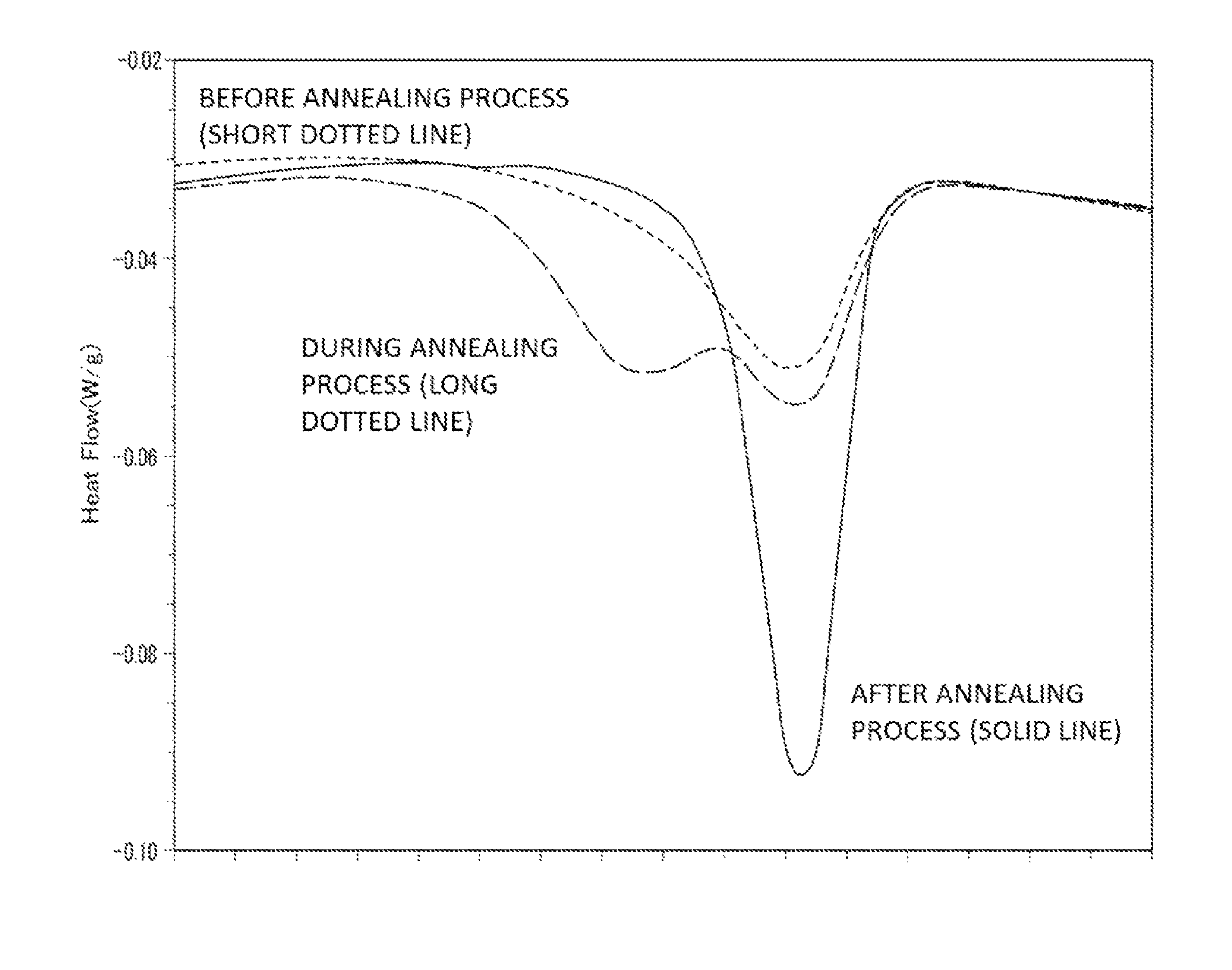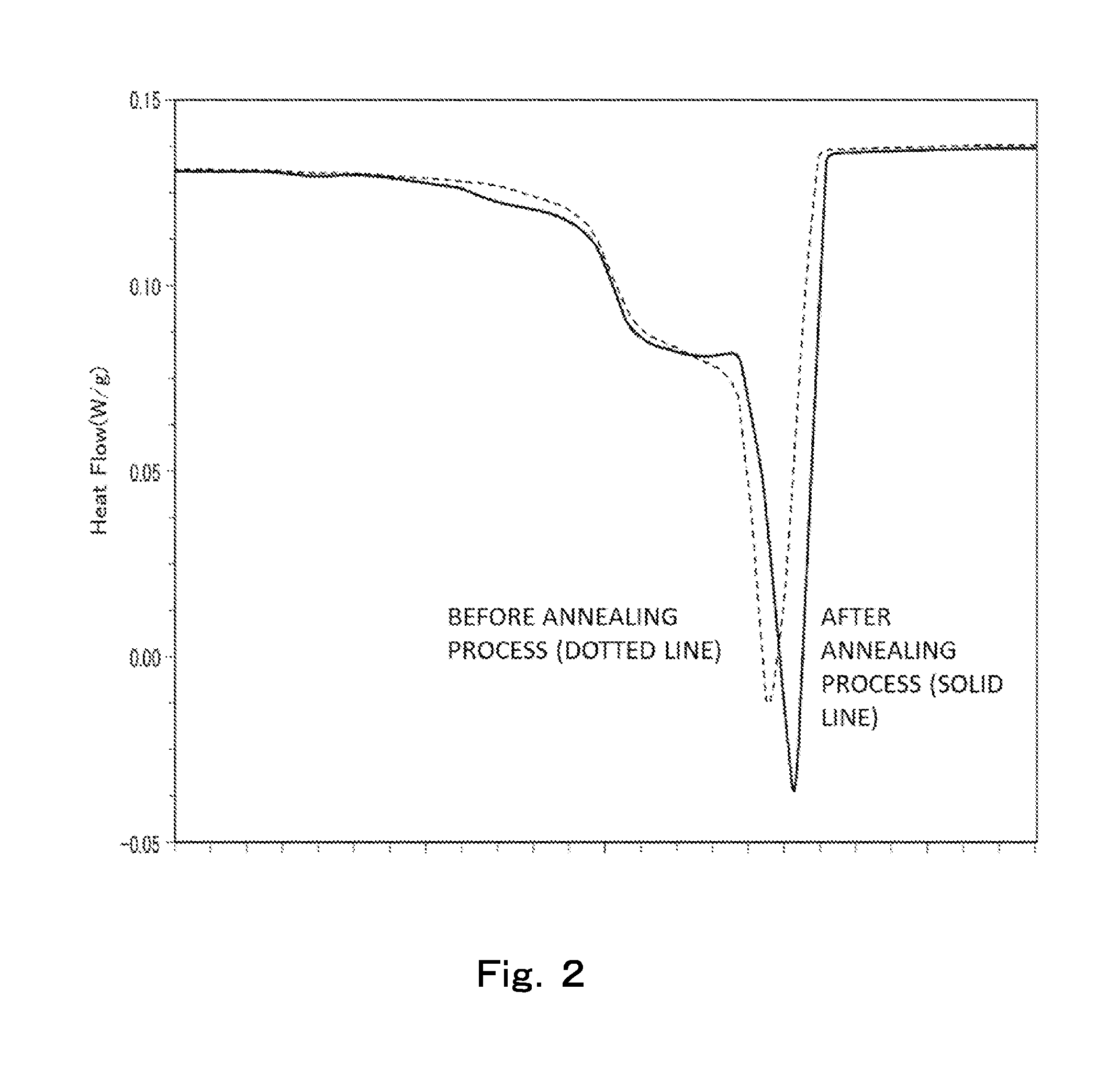Method for producing toner particles
a technology of toner particles and toner particles, which is applied in the field of toner particles production, can solve the problems of poor toner development performance, poor heat-resistant storage performance, and poor toner performance, and achieves the effects of low energy consumption, good toner development performance, and sufficient heat-resistant storag
- Summary
- Abstract
- Description
- Claims
- Application Information
AI Technical Summary
Benefits of technology
Problems solved by technology
Method used
Image
Examples
examples
[0153]The present invention will be explained next based on examples, but the present invention is not limited to these examples. The “parts” recited in the examples denote mass parts in all cases.
[0154]
[0155]A reaction vessel equipped with a stirrer, a thermometer, a nitrogen inlet tube, a water-removal tube and a pressure-reducing device was charged with 100.0 parts of sebacic acid and 106.5 parts of 1,12-dodecanediol, with heating up to a temperature of 130° C. under stirring. Then 0.7 parts of titanium (IV) isopropoxide, as an esterification catalyst, were added, the temperature was raised to 160° C., whereupon condensation polymerization proceeded for 5 hours. Thereafter, the temperature was raised to 180° C., and the reaction was left to proceed under reduced pressure down to a desired molecular weight, to yield polyester (1). The weight-average molecular weight (Mw) of polyester (1) was 19000, and the melting point (Tm) was 84° C. The obtained polyester (1) is crystalline pol...
examples 1 to 39
[0206]An annealing process as in Table 4 and FIGS. 5 to 9 was carried out using the resin particle dispersion solutions 1 to 11 and 14, while under continued stirring, and the dispersion solutions were cooled thereafter down to a temperature of 20° C. This was followed by washing and drying, to yield toner particles 1 to 39. The physical properties of the obtained toner particles 1 to 39 are given in Table 6.
PUM
| Property | Measurement | Unit |
|---|---|---|
| temperature fluctuation | aaaaa | aaaaa |
| temperature | aaaaa | aaaaa |
| temperature | aaaaa | aaaaa |
Abstract
Description
Claims
Application Information
 Login to View More
Login to View More - R&D
- Intellectual Property
- Life Sciences
- Materials
- Tech Scout
- Unparalleled Data Quality
- Higher Quality Content
- 60% Fewer Hallucinations
Browse by: Latest US Patents, China's latest patents, Technical Efficacy Thesaurus, Application Domain, Technology Topic, Popular Technical Reports.
© 2025 PatSnap. All rights reserved.Legal|Privacy policy|Modern Slavery Act Transparency Statement|Sitemap|About US| Contact US: help@patsnap.com



